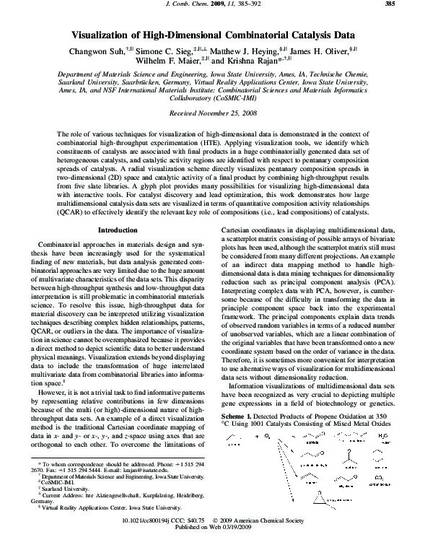
The role of various techniques for visualization of high-dimensional data is demonstrated in the context of combinatorial high-throughput experimentation (HTE). Applying visualization tools, we identify which constituents of catalysts are associated with final products in a huge combinatorially generated data set of heterogeneous catalysts, and catalytic activity regions are identified with respect to pentanary composition spreads of catalysts. A radial visualization scheme directly visualizes pentanary composition spreads in two-dimensional (2D) space and catalytic activity of a final product by combining high-throughput results from five slate libraries. A glyph plot provides many possibilities for visualizing high-dimensional data with interactive tools. For catalyst discovery and lead optimization, this work demonstrates how large multidimensional catalysis data sets are visualized in terms of quantitative composition activity relationships (QCAR) to effectively identify the relevant key role of compositions (i.e., lead compositions) of catalysts.
Available at: http://works.bepress.com/james_oliver/20/

Reprinted with permission from ACS Combinatorial Chemistry 11 (2009): 385–392, doi:10.1021/cc800194j. Copyright 2009 American Chemical Society.